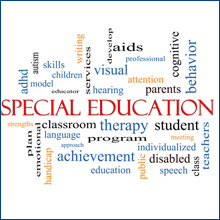By Jeffrey Forte, Esq. |Forte Law Group
Introduction:
Connecticut, like many other states in the United States, has a robust legal framework to ensure that students with disabilities receive the support they need to access a quality education. The state’s special education laws are designed to protect the rights of students with disabilities, outline their entitlements, and provide avenues for dispute resolution. In this blog post, we will explore the key aspects of Connecticut’s special education laws, providing parents, educators, and advocates with a comprehensive guide to navigating this important field.
1. Individuals with Disabilities Education Act (IDEA):
Connecticut, like all other states, adheres to the federal law known as the Individuals with Disabilities Education Act (IDEA). IDEA ensures that eligible children with disabilities receive a free and appropriate public education (FAPE) tailored to their unique needs. It outlines the evaluation process, eligibility criteria, and the creation of Individualized Education Programs (IEPs) for students.
2. The Planning and Placement Team (PPT):
The Planning and Placement Team is a vital component of Connecticut’s special education laws. The PPT is responsible for determining a student’s eligibility for special education services, developing the IEP, and making placement decisions. The team typically includes parents or guardians, teachers, special education professionals, and relevant specialists.
3. Individualized Education Program (IEP):
An IEP is a legally binding document that outlines the specific goals, accommodations, modifications, and services a student with a disability requires to access an appropriate education. Connecticut law mandates that schools develop IEPs in collaboration with the student’s PPT, considering the child’s strengths, weaknesses, and individual needs.
4. Least Restrictive Environment (LRE):
Connecticut, in line with federal law, upholds the principle of providing education in the least restrictive environment. This means that students with disabilities should be educated alongside their non-disabled peers to the maximum extent appropriate. Exceptions to this rule are made only if the student’s needs cannot be met satisfactorily in a regular classroom setting.
5. Due Process and Dispute Resolution:
Connecticut provides mechanisms for parents and guardians to resolve disputes with their child’s school district regarding special education services. These mechanisms include mediation, due process hearings, and appeals. It is crucial for parents and advocates to understand these procedures and their rights when seeking to resolve conflicts.
Connecticut’s special education laws play a pivotal role in safeguarding the rights and educational opportunities of students with disabilities. By understanding the legal framework and processes involved, parents, educators, and advocates can ensure that children receive the support they need to thrive academically, socially, and emotionally. It is important to stay informed, collaborate with the PPT, and advocate for the best interests of students with disabilities to ensure they receive a quality education that prepares them for a bright future. To learn more about Connecticut special education laws, contact Forte Law Group LLC.



